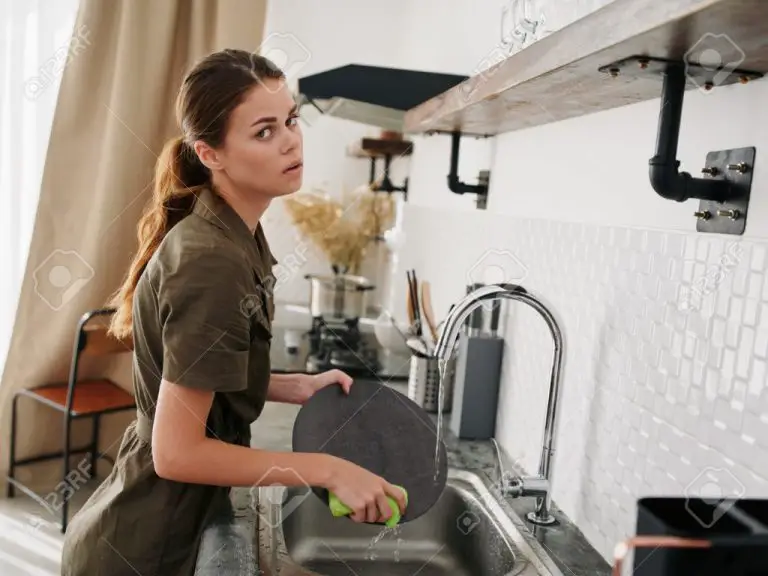Can Ceramic Be A Candle Holder?
Ceramic materials are inorganic, nonmetallic materials made from compounds of metal, nonmetal, or metalloid atoms primarily held in ionic and covalent bonds. The most common ceramic materials include clay, silica, and glass. Ceramics are typically hard, porous, and brittle, and resistant to heat and chemicals. Some key properties of ceramic materials are high melting temperatures, low thermal and electrical conductivity, high chemical resistance, high hardness and strength, and low ductility. Ceramics can be crystalline or non-crystalline and are used in a wide variety of applications including tableware, tiles, pottery, sculptures, electrical insulators, bricks, and technical ceramics. This article will explore using ceramic materials as candle holders and discuss the advantages and challenges of designing and using ceramic candle holders compared to other materials.
History of Ceramic Use
Ceramics have been an integral part of human civilization for thousands of years. The earliest known ceramic objects date back to around 29,000 – 25,000 BC in the Gravettian period. These early ceramics were mostly figurines and pottery vessels. According to the American Ceramics Society, the first functional pottery vessels emerged around 9000 BC and were likely used for storing foods [1].
Evidence shows that nearly every early civilization used and produced ceramics in some form, including ancient Egypt, Mesopotamia, Greece, China, and the Indus Valley. Common uses included pottery, tiles, bricks, vases, plates, and figurines. The Wikipedia article on ceramics notes the long history of ceramics across many ancient cultures [2]. Ceramic production methods and uses evolved over thousands of years as civilizations innovated new techniques and applications.
Over time, ceramics became vital for storage, cooking, construction, art, ritual objects, and more. Their durability, moldability, and decorative capacities made them a ubiquitous material throughout most of human history. Even as new materials emerged, ceramics continued to be a staple material for both utilitarian and artistic purposes.
Properties of Ceramic
Ceramics are known for their unique combination of properties that make them useful across a wide range of applications. Some of the key properties of ceramic materials include:
Brittleness – Ceramics are hard, but also quite brittle. This means they can fracture when subjected to tensile stresses or shock loading. Ceramics tend to fail suddenly and catastrophically when overloaded, rather than deforming plastically like metals. Their brittleness can limit their applications in situations where toughness is required.
Heat resistance – Most ceramics have excellent heat resistance compared to metals or polymers. They have high melting temperatures and retain their strength at high temperatures. For example, silicon carbide can be used at temperatures over 1000°C and silicon nitride can withstand 1300°C. This makes them useful for applications like automotive engine components, refractory linings, and heat exchangers.
Durability – Properly processed ceramics are chemically inert and weather resistant. They resist corrosion, oxidation, and deterioration from exposure to water, acids, salt, and other harsh environmental conditions. With proper care, ceramic materials can last for thousands of years.
As noted in the article on Structure and Properties of Ceramics, ceramics possess a unique combination of hardness, wear resistance, elasticity, and chemical stability that makes them indispensable for modern technology.
Making Ceramic Candle Holders
Ceramic candle holders can be crafted by hand from clay or purchased ready-made. To make your own, start with air-dry clay, polymer clay or firing clay. Shape the clay into the desired form – round, square, cylindrical etc. Use your fingers and simple household tools like knives and rolling pins to sculpt shapes. Add decorative textures by pressing objects into the soft clay. Smooth over seams and cracks with your fingers dipped in water.
If using firing clay, candles holders must be dried slowly and then fired in a high temperature kiln. Firing permanently hardens and sets the clay through vitrification. Glazes can be applied before firing to add color and effects. https://thelovelydrawer.com/diy-ceramic-look-candleholders/
Air-dry clay and polymer clay do not require firing. Allow your sculpture to air-dry thoroughly or cure polymer clay by baking it at a low temperature. Finish with acrylic paints or leave plain. Seal with varnish or glaze for added protection and shine.
Advantages of Ceramic Holders
Ceramic candle holders offer several advantages over other materials like glass, metal, or wood. One key benefit is the high heat resistance of ceramic. According to Bright Glassware, ceramic generally exhibits good fire resistance, making ceramic candle vessels safer than more flammable materials. The durability of ceramic allows it to withstand the high temperatures of burning candles without cracking.
Another advantage of ceramic is the ability to create custom styles, colors, and designs. Ceramic can be molded and shaped, then painted or glazed during the firing process. This allows artisans to produce one-of-a-kind, artistic candle holders that add artisanal value and visual interest. The handcrafted nature and uniqueness of ceramic sets it apart from mass-produced holders.
Finally, the aesthetics and artistry of ceramic provide an attractive, decorative element to candle displays. The rich colors and textures possible with ceramic lend an artistic flair. Ceramic’s longevity as a decorative medium throughout history demonstrates its enduring decorative appeal. For those seeking beautiful, artistic candle holders, ceramic is an excellent choice.
Disadvantages of Ceramic
While ceramic can make beautiful and artistic candle holders, the material does have some drawbacks. The biggest disadvantage of ceramic for candle holders is its brittleness. Ceramic is more prone to chipping, cracking, or breaking compared to materials like glass, metal, or wood (source). So ceramic candle holders require gentle handling and care to prevent damage.
Ceramic is also heavier than glass, metal, or plastic alternatives. The weight makes ceramic holders less portable and more difficult to move around. Heavier materials increase the risk of accidentally knocking over the candle holder and having hot wax spill. The fragility and density of ceramic does limit its functionality as a candle vessel.
However, careful selection of style, shape, and thickness can minimize the drawbacks. Opting for low and wide ceramic holders rather than tall, thin ones prevents tipping. Handles provide a safer grip to move ceramic holders. Glazing offers some durability to prevent chips and cracks. So while ceramic has disadvantages, they can be mitigated through thoughtful design.
Ceramic vs. Other Materials
Ceramic is a popular material for candle holders, but how does it compare to other common materials like glass, metal, and wood?
Compared to glass, ceramic is generally more durable and resistant to high temperatures. Glass can crack or shatter if exposed to rapid temperature changes or direct flames. Ceramic’s porous nature also provides a better grip and makes it less slippery than glass. However, glass comes in a wider variety of colors and transparency options.
Metal candle holders like brass, iron or stainless steel are very durable and conductive, dispersing heat well. However, metal can get hot to the touch. Ceramic insulates heat better and is not as prone to getting hot on the exterior. Ceramics also come in more shapes, colors and designs than typical metals.
Wood can be an attractive option for candle holders, bringing natural beauty and texture. However, wood is flammable and susceptible to burns or scorch marks from candles. Ceramics are more resistant to direct flames. While wood holds some heat, ceramics retain heat even better. Woods can be limited in color variation, while glazed ceramics offer limitless colors and patterns.
Overall, ceramic balances attractive qualities of all these materials. Ceramic candle holders are durable, heat resistant, and customizable while avoiding some of the drawbacks of glass, metals or wood. The variety of looks and designs make ceramic one of the most versatile and popular options for candle vessels.
Ceramic Holder Designs
Ceramic candle holders come in endless shapes, sizes, colors and designs. Some popular options include:
- Classic round or oval shapes in solid glazes like white, black, blue, green, etc. These have a clean, simple look perfect for minimalist decor (see examples at https://www.pinterest.com/pin/339593767358928/).
- Square, rectangle, hexagon or triangular holders with straight edges and geometric appeal. Glazing patterns like stripes or colorblocking create visual interest (see https://www.pinterest.com/pin/594920043639395293/).
- Intricately carved holders featuring floral, animal and nature motifs. These showcase the artistry of the ceramic medium (browse designs at https://www.pinterest.com/pin/33048136311084059/).
- Mosaic candle holders made by combining colored ceramic tiles in eye-catching patterns. The tiles may form abstract or pictorial designs (see https://www.pinterest.com/pin/47639642819486987/).
- Hand-painted holders featuring freehand brushwork in vivid glazes. These display creativity with colors, strokes, and imagery (view examples at https://www.pinterest.com/pin/47639642819486562/).
Ceramic candle holders can take any form, from realistic animal shapes to abstract sculptures. The diversity allows finding unique designs to match any decor style.
Caring for Ceramic Holders
Ceramic candle holders require some special care to keep them looking their best. Here are some tips for cleaning, storing, and handling these delicate materials:
Cleaning ceramic holders can be tricky because the material is prone to staining from candle wax. To clean, first let the holder cool completely after the candle burns out. Then fill the holder with boiling water and let it sit for 5-10 minutes to loosen the wax. Pour out the water and use a soft cloth to gently wipe away any remaining wax residue. Avoid abrasive cleaners or scrubbing too hard, as this can damage the glazed ceramic surface. According to Mojo Candle Co., ceramic vessels should be hand washed before running them through the dishwasher to ensure all wax is removed.1
For storage, wrap ceramic holders carefully in tissue paper or bubble wrap to prevent chips and cracks. Avoid stacking them tightly together. Store in a dry location away from direct sunlight. Prosperity Candle recommends storing cleaned ceramic jars upside down to prevent dust from settling inside.2
When handling ceramic holders, be cautious as they can crack or shatter if dropped. Hold over a soft surface when transporting in case of falls. Do not expose to extreme temperature changes which could also cause breakage.
Conclusion
Ceramic material has been used for thousands of years to create a variety of functional and decorative objects. With the right techniques, ceramic can also be an excellent material for candle holders. The porous nature of ceramic helps disperse fragrance from candles, while its durability allows holders to last for years. Glazing ceramic provides an impervious surface that resists wax buildup. Creative designs and glazes allow each ceramic holder to have a unique, artistic flair. While ceramic holders must be handled with care to prevent cracks or chips, they offer beauty and versatility when used properly. In summary, ceramic holders provide a attractive, practical, and long-lasting option for safely displaying candles.




